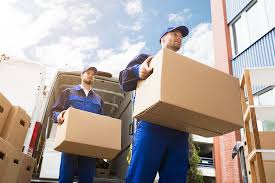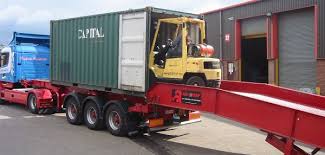Moving Packing Service
We’re confident that just about anyone who’s moved will understand us when we say this: one of the biggest pains of moving is packing. If you haven’t yet experienced this (lucky you), you’ll see when that day comes—it won’t take long before you realize it too. At least when you’re unpacking, you have some form of immediate gratification to look forward to—no deadlines, new homey canvas, getting all settled in. One of the most exciting parts, of course, is getting to choose placement and going all feng shui on your new home to finally nab that sought-after “look” you’ve been relishing on Pinterest. That part is a blast—and we know it well.
but not so much with packing. During this tedious part of the process, you’ve got a number of things to worry about, such as:
Finding enough boxes
Locating specialized boxes for some of your more vulnerable or valuable possessions
Trying to stay organized with labeling and categorizing
Figuring out a way to haul everything in as few trips as possible
Packing the truck
Full-Service Option
Understandably, we have a substantial number of customers who need to move but don’t want to deal with the moving process; so instead, they hire a great, affordable moving company to do the nitty gritty—the whole process of:
Packing
Loading
Shipping
Unloading
Unpacking
Arranging and positioning at the new location
Partial Service
Having said that, we offer a variety of moving services fit for any budget which can be a more convenient, pocket-friendly choice for many. Essentially, you choose a partial amount of stuff for us to pack and move, and you the other. This service option will get you spot-check help on items you may consider vulnerable, or requiring special care; these would include dishes, antiques, family heirlooms, artwork, sculptures, etc. In this scenario, you can choose to handle however many packages or items you wish, and leave the items you really want to protect to us.
Supply Provisions
Some of our customers will want to handle as much of the move as they can, to save on costs. However, they may end up running into issues like the aforementioned orphaned flat-screen television, or the large appliances. Fortunately, our trucks carry a full inventory of supplies for customers who prefer to keep it DIY (do-it-yourself). These include:
Tailored boxes
Packing peanuts
Styrofoam
Stretch wrap
Wrapping paper

The Guide To Moving House
Keep An Inventory Of Your Items & Prepare Measurements
The first step to moving house would be to make a list and categorise your items. A great way to start would be to walk through each room of your home and categorise the essential items in each individual room to ensure nothing is missed out. While it might be tempting to take everything with you to your new home, take the opportunity to do some quick spring cleaning. Everyone has junk and old items that no longer have any use and should be thrown away.
Preparing The Necessary Packing Materials & Start Packing
Not sure how to pack for moving house? Start by choosing the right packing materials to save time and transport your belongings safely without any hiccups or damage.
Here is a list of 3 packing materials you will need to make packing easier and more systematic:
Cardboard Boxes
These will be the staple packing materials needed for your move. Getting cardboard boxes of various sizes will be important, allowing you to segregate the heavy and fragile items away from items generally easier to transport such as clothes and books.
Plastic Boxes and Containers
Great to store your electronics such as your laptop and computer parts, these waterproof plastic boxes help you to easily identify your items as well as transport them in an environment that is free from water risk.
Bubble Wrap & Foam Peanuts
If you have items such as porcelain, ceramics and paintings that need to be transported, covering them in bubble wrap is ideal to protect their surfaces from damage.
Plan Which Items Go Into Which Room & Label Your Boxes
Planning which items to place in each of your rooms is crucial and best done from the start! Understanding where to place each item beforehand allows you to group your items together and label your boxes according to the specific room they belong to. When labelling, take note and separate your living essentials such as toiletries and foodstuffs from the rest of your items as these would be the first to be unloaded and unpacked once you reach your new home.
Prepare A Moving Day Pack Full Of The Essentials
Moving house is a process and will likely take you a few days to a week to finish unpacking. Having a moving day pack will help you stay comfortable and cover the living essentials should the process be delayed.
Include in your backpack or duffel bag:
A fresh change of clothes for the family
Toothbrush and toothpaste
Toilet paper
Your handphone charger and relevant adaptors
Your medication (if any)
Fresh bed sheets and pillow covers
Get Quotes From House Moving Companies & Start Negotiating
While you might have a recommendation from your friend who just moved home a few months back, it is always better to get at least three quotes from professional movers

Quality Moving Services
Packing/Unpacking
Leave the packing, unpacking, and organization to the experts.
Disassembly/Reassembly
Get help with washers, dryers, bed frames, mounted TVs, and more.
Storage
Need a temporary home for all your belongings? We’ve got you covered.
Transparent Pricing
We offer some of the most affordable local and long distance moving rates in the country. We believe in transparent and honest pricing, which is why we start by giving every customer a moving quote that’s as accurate and detailed as possible
On Time… Every Time!
Whether you are moving across town or across the country, our team of skilled professionals will prioritize your move and get you moved on-time! We don’t think it’s fair to keep our customers waiting. Your time is valuable, and moving day is stressful enough without worrying about unreliable movers. Don’t let a no-show moving company ruin your day.
Protecting Your Fragile Items
Moving takes our responsibility for your belongings seriously. We have a fantastic record of customer service and are fully insured to guarantee you a worry-free move. Your team of movers has been trained to properly pack items, disassemble/reassemble furniture, load the moving truck, and more. We pride ourselves on treating your belongings as if they were our own
Thousands of Happy Customers
Check out our great mover reviews and see what other customers have to say about their experience with us. Our team of dedicated moving professionals is here to serve you throughout the moving process, from start to finish.
Moving Guide
Hiring A Moving Company
If you plan on hiring a moving company, you might want to do some research first. Please review the sites below for more great information about moving and to find a company whose services fit you best
What Do I Look For When Hiring A Moving Company?
The American Moving and Storage Association (AMSA) offers a Certified Mover Program for moving companies throughout the United States. This program consists of professional movers that have agreed to follow “Code of Conduct,” by responding to customers both ethically and in a timely manner.
This group of movers offers:
Efficient and reliable transportation of household goods
Storage of household goods
Professional service
Prompt customer service when dealing with complaints
Arbitration
Moving Yourself
Some homebuyers choose to move themselves and their belongings. It you want to save time and money by taking on this endeavor yourself, be sure that you have ample packing supplies. Please review the sites below for some informative resources about purchasing boxes, bubble wrap, labels and tape
The Day Of The Move
The day has finally arrived! As excited as you and your family maybe about your new home and its surroundings, moving can make everything seem uncertain. It is important to take a deep breath and try not to be stressed.
Moving and Storage Experts!
completely tailor our moving services to fit your needs. After your first call, our moving consultants will begin putting together a personalized moving plan. We’ll form a plan that fits your budget, and we can take care of any and every part of the moving experience. Our services include planning, packing, sorting, labelling, storage, transportation, assembly and dissassembly of furniture and more!
Packing Services & Moving Supplies
Moving & Storage offers complete packing services that include sorting, labelling and boxing your belongings according to your personalized moving plan. We will dissassemble and reassemble any furniture, including sofas, coffee tables, beds, chairs, etc., and store all furniture using quilt-pads and blankets during the moving process.
commercial moving services cover every aspect of your upcoming move. These include devising a moving strategy that doesn’t interfere with your organization’s schedule or work-flow, conducting packing meetings, obtaining any necessary permits and working with the managers of all property sites affected by your business’s move.
services include planning, packing, sorting, labelling, storage, transportation, assembly and dissassembly of furniture and more!
Packing Services
You don’t have to worry about the packing or heavy lifting! we’ll carefully sort and pack all your belongings. We also can provide any packing supplies you might need!
Local Moves
locally-owned! We know the area and have two decads of experience performing local moves in the area.
Long Distance
Our professional moving team can help you move to anywhere and from anywhere in the country! even performs international moves. No move is too big or too small!
Storage Services
We can provide storage units to store anything you need during, before or after your move! we guarantee your belongings will be safe and secure.


